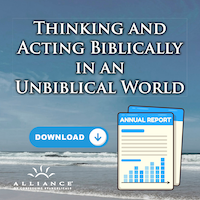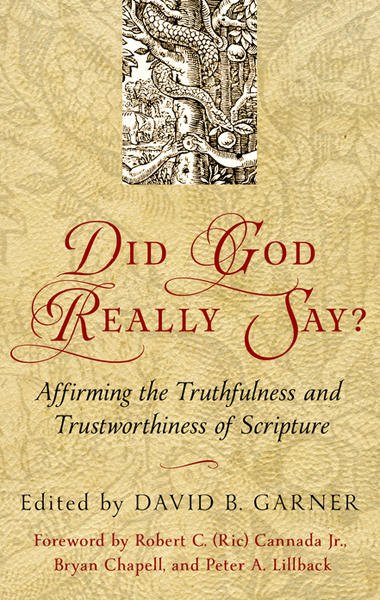
In our first piece in this mini-series on challenges faced by the church in the 21st Century we considered the challenge of getting the gospel out to those who need to hear it. The main thrust of this is, of course, the verbal and propositional communication of God’s message of redemption through his Son. It involves the very real need for those who articulate that message having a competent grasp of the gospel themselves. Or, to use the language of Peter, always being prepared to explain the reason for the hope they have (1Pe 3.16).
There is, however, another crucial dimension to communicating the gospel effectively: through lives that reflect the difference it makes to those who believe it. It is what Lindsay Brown, former General Secretary of the International Fellowship of Evangelical Students has described as, ‘the apologetic of a transformed life’.
Paul clearly saw this as a crucial dimension of effective gospel outreach because he refers to it on more than a few occasions. In his counsel to Christians who were slaves on the island of Crete he said their behaviour should be such that ‘in everything they may adorn the doctrine of God our Saviour’ (Tit 2.10). And, seeking to encourage his young protégé, Timothy, in his final letter to him he said, ‘But as for you, continue in the things you have known and become convinced of [the gospel which is able to make you wise for salvation] because you know those from whom you have learned it’ (2Ti 3.14). The truth of the gospel is written large not merely in the pages of the Bible, but in the lives of those who have truly embraced the Christ of whom it speaks.
And that is what leads us into the second major challenge facing the church in this century: the challenge of modelling what it means to be human. It is a challenge that goes beyond merely being able to articulate an orthodox doctrine of humanity. In one sense that is not hard to do if we allow ourselves to be guided by Scripture. But the challenge comes when it leads us beyond the theological theory into actual practice.
If redemption means that those who are redeemed are ‘new creation’ in Christ (2Co 5.17), are ‘born from above’ by the Holy Spirit (Jn 3.3-5) and ‘are being renewed in the image of [their] creator’ (Col 3.10), then the watching world can rightly expect to see a visible difference. The new humanity that is ours in union with Christ – who Ian Hamilton describes as ‘the prototypical man’ – then his followers should in measure reflect the new and true humanity that is his. The challenge of modelling this new life comes at three levels.
In our own Life Individually
Although it does not represent the sum total of what it means for human beings to be made in the image and likeness of God, the natural place to see where its focus lies is in our life individually. Just as every human being is an image-bearer of God their maker, but because of the fall bear a tarnished image; so every Christian person – whether male or female – will begin to exhibit the first green shoots of a restored image because of redemption.
An older generation of Christians would have instinctively described this under the categories of sanctification: the fact that we are holy in status and are growing towards holiness in newfound life in Christ. The exchange of ‘a heart of stone’ for ‘a heart of flesh’ that lies at the centre of the experience of salvation (Eze 36.26) will lead to a life lived less and less for self and more and more for God.
The first step towards coming to faith in Christ for many people is simply meeting and getting to know someone who is a genuine Christian and whose life stands out as being attractively different because of that. In an age of an increasing array of dehumanising influences in people’s lives – from hyper-sexualisation through to being defined by what we have, rather than what we are – meeting Christians who are ‘normal human beings’ is a witness in itself.
In Marriage, Family and Singleness
The doctrine of humanity goes beyond merely what we are as individuals. Just as the God whose image we bear is more than just an individual Person, but exists eternally in the divine community of Father, Son and Spirit, so image-bearing extends to the human family at large.
When sin entered the world through Adam’s disobedience, it was not just that humanity’s relationship with God fell casualty to that act of rebellion, but the internal relationships of the race suffered as well. In the then humanity of two – Adam and Eve – what had up until that point been a happy and harmonious marriage became a strained relationship with a husband blaming his wife for the failure that was primarily his own. And even when the first couple is blessed with the gift of children, the first two sons are cursed with rivalry and jealousy that lead to fratricide.
It has been the story of our race ever since. Fractured relationships at worst, dysfunctional ones at best. And with burgeoning divorce rates and single-parent families, surely the most obvious ‘alternative society’ should be on public display in the lives of those who are being made new in the image from which we fell.
The three realms of relationship in which that is most visible is in marriage and family, but also in singleness. The first two of these are obvious and are often the focus of the church’s exhortations towards transformed relationships. But too often they are emphasised at the expense of that other hugely significant web of relationships involving those who are single: those who are single by choice, single reluctantly and single again through death or divorce. Since the single population is a large component of the population at large, it represents a massive mission field into which the church can reach by catering for their needs and making them feel every bit as part of the church as those who are married with kids.
In the Church as God’s new Community
But it is the church itself as God’s redeemed community that is the jewel in the crown of God’s visible witness to the world. Paul makes this point potently in what he says to the church in Ephesus: ‘His intent was that now, through the church, the manifold wisdom of God should be made known to the rulers and authorities in the heavenly realms, according to his eternal purpose which he accomplished in Christ Jesus our Lord’ (Eph 3.10-11). In other words, the church is the stage on which the living drama of redemption is played out – not merely before the eyes of the watching world, but before the eyes of the unseen watchers of the heavenly realms.
From a merely human perspective, such a purpose might seem to have gone disastrously wrong, given the litany of failures that has characterised the church’s history. But at the same time it has actually served to make the very point that God intends it to make: that salvation is never by mere human endeavour, but by the operations of his grace. The fact that, despite her multiplicity of sins and failures, the church has survived and has continued to bear witness to the ends of the earth is a testimony to a gospel of grace and not merit.
The preeminence of grace, however, does not in any way minimise the seriousness of the church’s shortcomings and failures. Indeed, if anything, it is designed to make the church more acutely aware of the sinfulness of sin and make it her business to deal with it. The grace which Paul says ‘super-abounds’ (Ro 5.20) does so in the face of super-abundant sin – it does so for Christians to avail themselves of to overcome temptation.
And therein lies the greatest challenge the church faces not merely in the 21st Century, but throughout her entire history. It is a challenge that does not come from the outside, but from within. It is the very earthy challenge of modeling God’s new and true humanity to a dehumanised and dehumanising world.

The Alliance of Confessing Evangelicals is member supported and operates only by your faithful support. Thank you.















 © Alliance of Confessing Evangelicals
© Alliance of Confessing Evangelicals


